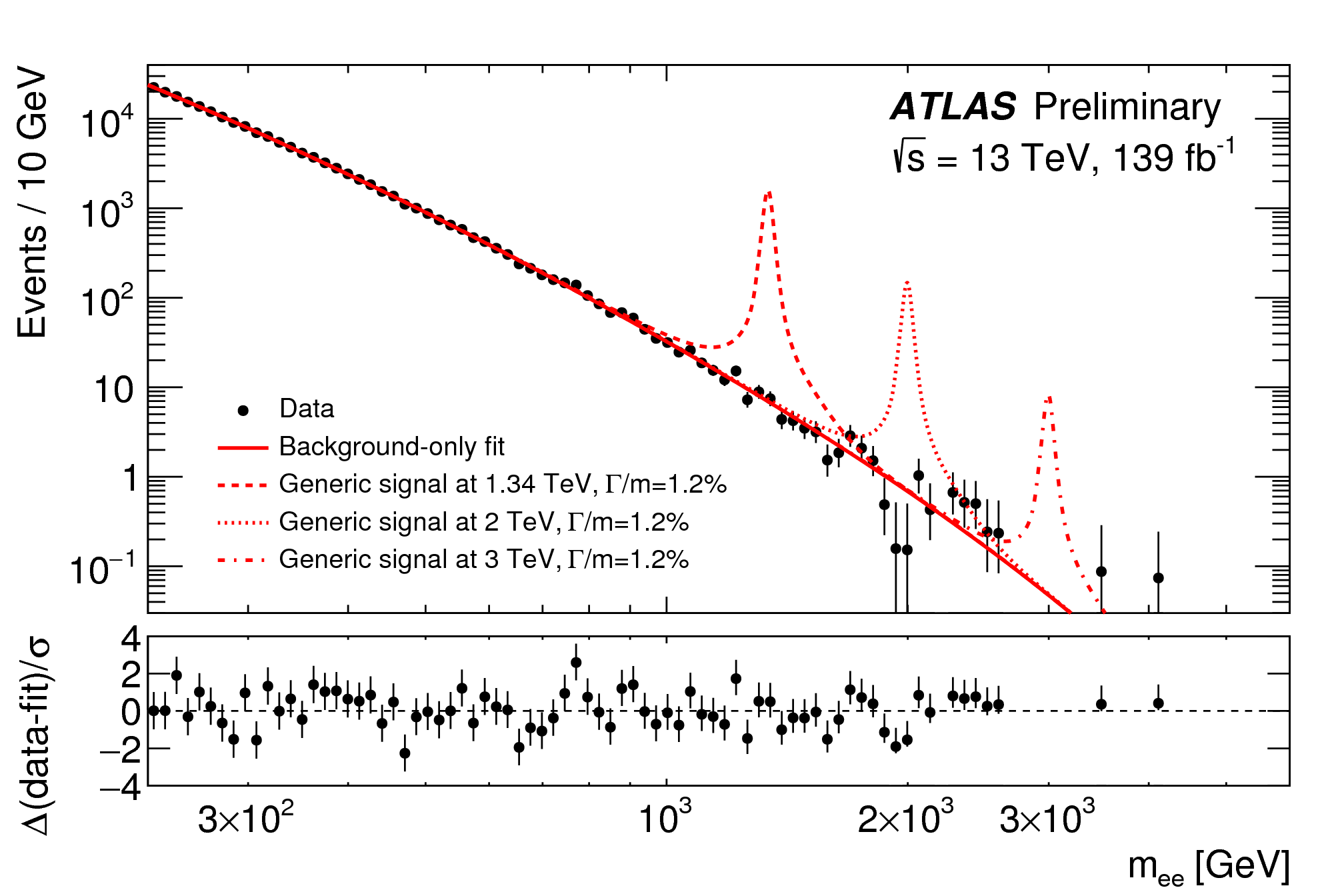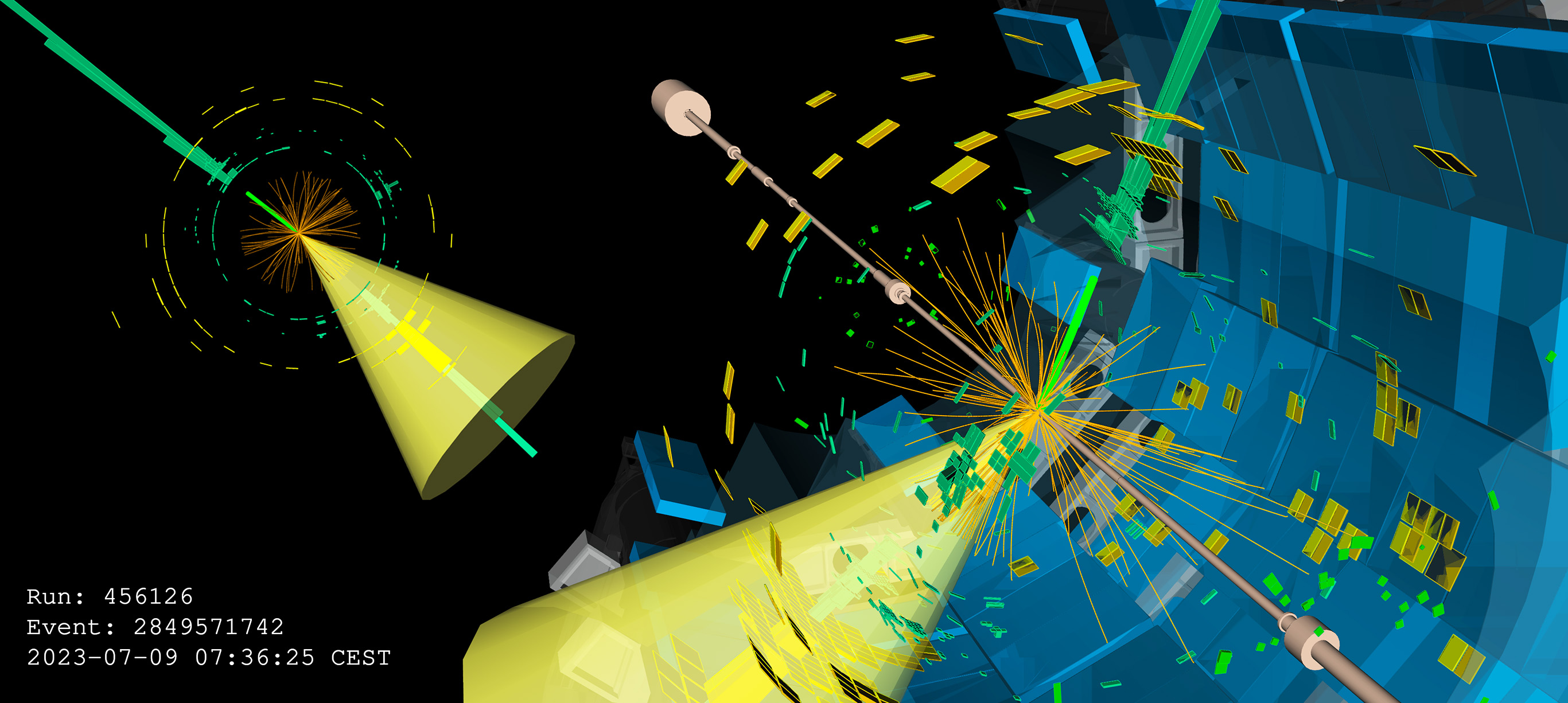First ATLAS result with full Run-2 dataset: a search for new heavy particles
27 February 2019 | By

Could a Grand Unified Theory resolve the remaining mysteries of the Standard Model? If verified, it would provide an elegant description of the unification of Standard Model forces at very high energies, and might even explain the existence of dark matter and neutrino masses. ATLAS physicists are searching for evidence of new heavy particles predicted by such theories, including a neutral Z’ gauge boson.
The ATLAS collaboration has today released its very first result utilising its entire LHC Run-2 dataset, collected between 2015 and 2018. This analysis searches for new heavy particles decaying into dilepton final states, where the leptons are either two electrons or two muons. This is one of the most sensitive decays to search for new physics, thanks to the ATLAS detector’s excellent energy and momentum resolution for leptons and the strong signal-to-background differentiation as a result of the simple two-lepton signature.
Today's ATLAS result looks for new heavy particles decaying into dilepton final states and employs a novel data-driven approach for estimating the Standard Model background.
The new ATLAS result also employs a novel data-driven approach for estimating the Standard Model background. While the previous analysis predominantly used simulations for the background prediction and was carried out with a fraction of the data, this new analysis takes advantage of the vast Run-2 dataset by fitting the observed data with a functional form motivated by and validated with our understanding of the Standard Model processes contributing to these events. If present, the new particles would appear as bumps on top of a smoothly falling background shape, making them straightforward to identify (see Figure 1). This is similar to one of the ways that the Higgs boson was discovered in 2012, through its decay to two photons.
In addition to probing unexplored territory in the search for new physics, a great deal of work in this analysis has gone into understanding the ATLAS detector and collaborating with the various detector performance groups to improve the identification of very high-energy electrons and muons. This included accounting for the multiplicity of tracks in the inner part of the detector, as it continuously increased due to the rising average number of proton-proton collisions per bunch crossing during Run 2.
No significant sign of new physics has been observed thus far. The result sets stringent constraints on the production rate of various types of hypothetical Z’ particles. As well as setting exclusion limits on specific theoretical models, the result has also been provided in a generic format that allows physicists to re-interpret the data under different theoretical assumptions. This study has deepened the exploration of physics at the energy frontier; ATLAS physicists are excited about further analysing the large Run-2 dataset.
Links
- Search for high-mass dilepton resonances using 139 fb−1 of proton-proton collision data collected at 13 TeV with the ATLAS detector (ATLAS-CONF-2019-001, see figures)
- Search for new high-mass phenomena in the dilepton final state using 36 fb−1 of proton-proton collision data at 13 TeV with the ATLAS detector (JHEP 10 (2017) 182, see figures)
- See also the full lists of ATLAS Conference Notes and ATLAS Physics Papers.



